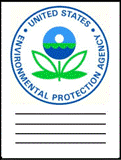United States Environmental Protection Agency

United States Environmental Protection Agency: Publications
Document Type
Article
Date of this Version
2014
Citation
Journal of American Water Resources Association, 2014
Abstract
Nonpoint source pollution from agriculture and urbanization is increasing globally at the same time climate extremes have increased in frequency and intensity. We review >200 studies of hydrologic and gaseous fluxes and show how the interaction between land use and climate variability alters magnitude and frequency of carbon, nutrient, and greenhouse gas pulses in watersheds. Agricultural and urban watersheds respond similarly to climate variability due to headwater alteration and loss of ecosystem services to buffer runoff and temperature changes. Organic carbon concentrations/exports increase and organic carbon quality changes with runoff. Nitrogen and phosphorus exports increase during floods (sometimes by an order of magnitude) and decrease during droughts. Relationships between annual runoff and nitrogen and phosphorus exports differ across land use. CH4 and N2O pulses in riparian zones/floodplains predominantly increase with: flooding, warming, low oxygen, nutrient enrichment, and organic carbon. CH4, N2O, and CO2 pulses in streams/rivers increase due to similar factors but effects of floods are less known compared to base flow/droughts. Emerging questions include: (1) What factors influence lag times of contaminant pulses in response to extreme events? (2) What drives resistance/resilience to hydrologic and gaseous pulses? We conclude with eight recommendations for managing watershed pulses in response to interactive effects of land use and climate change.
Included in
Environmental Sciences Commons, Other Life Sciences Commons, Other Physical Sciences and Mathematics Commons


Comments
U.S. Government work